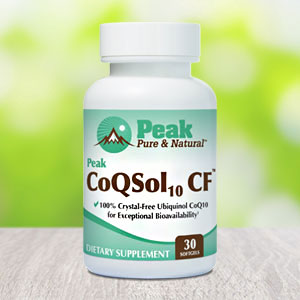Get Easy Health Digest™ in your inbox and don’t miss a thing when you subscribe today. Plus, get the free bonus report, Mother Nature’s Tips, Tricks and Remedies for Cholesterol, Blood Pressure & Blood Sugar as my way of saying welcome to the community!
2 conditions the shape of your heart increases risks for

There are a lot of risk factors for heart problems. For instance, if you have high blood pressure or high LDL cholesterol (the “bad” kind), you’re at higher risk of heart disease and stroke.
Smoking and secondhand smoke exposure can narrow the blood vessels by causing them to become swollen and inflamed, which can lead to many heart-related conditions.
Obesity, an unhealthy diet and physical inactivity can all raise your risks too. Of course many of these risk factors can be controlled just by making a few lifestyle changes…
But one that can’t is the shape of your heart.
2 common heart conditions tied to “round” hearts
Using deep learning and advanced imaging analysis, researchers from the Smidt Heart Institute at Cedars-Sinai found that people with baseball-shaped hearts, as opposed to the elongated valentine shape, were at higher risk for two common heart conditions.
After analyzing cardiac MRI images in 38,897 healthy individuals from the UK Biobank, the team used computation models from the same database to identify genetic markers of the heart associated with atrial fibrillation (AFib) and cardiomyopathy.
AFib is the most common type of abnormal heart rhythm disorder and greatly increases a person’s risk of having a stroke. They found people with spherical hearts were 31 percent more likely to develop AFib.
Cardiomyopathy is a type of heart muscle disease that makes it harder for the heart to pump blood to the rest of the body. It affects as many as 1 out of every 500 adults and can eventually lead to heart failure. This research found that having a spherical-shaped heart increased risk for this condition by 24 percent.
“By looking at the genetics of sphericity, we found four genes associated with cardiomyopathy: PLN, ANGPT1, PDZRN3, and HLA DR/DQ,” says Dr. David Ouyang, a cardiologist in the Smidt Heart Institute and study lead. “The first three of these genes were also associated with a greater risk of developing atrial fibrillation.”
According to Cedars-Sinai cardiologists, the shape of your heart changes over the years, typically becoming rounder over time. This is especially true after a major cardiac event like a heart attack.
“A change in the heart’s shape may be a first sign of disease,” says Dr. Christine M. Albert, chair of the Department of Cardiology in the Smidt Heart Institute and a study author. “Understanding how a heart changes when faced with illness — coupled with now having more reliable and intuitive imaging to support this knowledge — is a critical step in prevention for two life-altering diseases.”
Ouyang says the findings clarify the potential use of cardiac imaging to more effectively diagnose and even prevent many conditions.
Managing (and avoiding) AFib
The researchers emphasized the need for additional studies. But it’s interesting to think a new tool to gauge risks for heart problems may be monitoring the shape of the heart itself.
AFib is typically managed with medication to control the heart’s rhythm and rate. Blood-thinning medication is also usually part of the mix to reduce the risk of clots.
Some lifestyle changes have been shown to help, such as avoiding anything that can trigger an AFib episode. These include alcohol, sleeping on the left side or not getting enough sleep, dehydration and exercise in some cases. Caffeine is also listed as a trigger, but some studies have indicated that it might actually have a protective effect against arrhythmia.
Eating nuts can reduce your risk of AFib by an impressive 19 percent.
Many of the risk factors for AFib are the same as for any other heart condition, including excess weight, high blood pressure, diabetes, smoking and alcohol use.
Cardiomyopathy can be caused by many factors including genes, long-term high blood pressure, damage from a heart attack, metabolic disorders including diabetes, thyroid disease or obesity, and some chemotherapy drugs and radiation.
Editor’s note: There are perfectly safe and natural ways to decrease your risk of blood clots including the 25-cent vitamin, the nutrient that acts as a natural blood thinner and the powerful herb that helps clear plaque. To discover these and other secrets of long-lived hearts, click here for Hushed Up Natural Heart Cures and Common Misconceptions of Popular Heart Treatments!
Sources:
The Shape of Your Heart Matters — Cedars-Sinai
Heart Disease and Stroke — Centers for Disease Control and Prevention
Smoking and Cardiovascular Disease — Centers for Disease Control and Prevention














